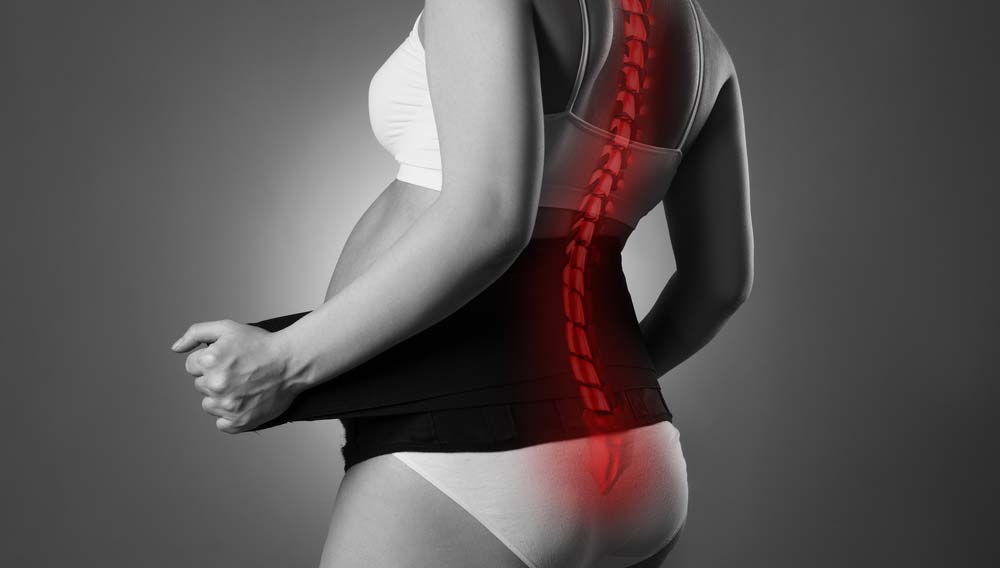Sciatica in pregnancy: Pregnancy itself does not cause a higher incidence of sciatica, but rather it is a condition that occurs in people who previously had a back injury.
Several factors influence the onset of sciatica in pregnancy, including weight gain and postural changes to which the body is subjected throughout the gestation process.
It is a condition that, although it does not necessarily occur in all pregnant women, it is favored by some factors of pregnancy, such as weight gain, change in the body´s center of gravity, distension of the abdominal muscles and the action of hormones such as progesterone, which contributes to the relaxation of the ligaments of certain joints in the body, such as the hip and pelvis.
Symptoms of sciatica
Usually, the symptoms of sciatica during pregnancy are:
-Tingling in the lower back.
-Numbness of the groin or genital area.
-Pain that spreads to the leg and foot of the affected side.

What can I do to avoid sciatica in pregnancy?
Simple measures can help prevent early sciatica in pregnancy:
-Practice moderate exercise: Practices such as walking, swimming or yoga contribute to strengthening the abdominal muscles while avoiding a sedentary lifestyle, two factors that help prevent discomfort in the back.
-Control weight in pregnancy: An excessive weight increase causes a greater compression of the sciatic nerve.
– Postural changes: Bad postural habits contribute to the appearance of pain. You must take into account some measures to avoid it: not sitting for long periods of time, do not cross your legs when sitting; stoop always bending the knees; keep your back straight when you sit and walk.
-Mild massage: They help relieve pain and tension in the lower back, especially when accompanied by relaxation and elongation techniques.
-Use appropriate footwear: It is not good that the shoe is completely flat or that it has an excessively high heel. The right measurement is between 3 and 5 cm.
-Put a pillow between your legs when sleeping: To relieve pain if you sleep on your side, or a pillow under your legs if you fall asleep on your back.
-Apply dry heat: When the pain appears, apply heat in the area several times a day. Hot water baths can also be given, as long as the water temperature is not excessively high.
-Avoid self-medication: Never take analgesics or anti-inflammatories without the express authorization of the attending physician.
When should I call a specialist?
Some symptoms of low back pain may be a sign of something more serious, so do not hesitate to call your doctor if:
-The pain is intense and constant. Also if you notice that the pain is getting worse or if it is due to a fall.
-In addition to pain, there is fever.
-The sensitivity of one or both legs has decreased; if you feel a lack of coordination or muscle weakness.
-You have lower back pain at the end of the second or third trimester. This can be a symptom of premature delivery, particularly if it is the first time it occurs.
What if I work in an office?
If that is the case, here are some suggestions:
-Avoid standing or walking for very long periods. As much as possible, take frequent rest and rest with your feet elevated.
-If you work at a desk, use an ergonomically designed and adjustable chair, with support for the lower back and feet. Change posture by sitting and standing frequently.
-If you need to sit for prolonged periods, take periodic breaks to walk.
-Sciatica in pregnancy

